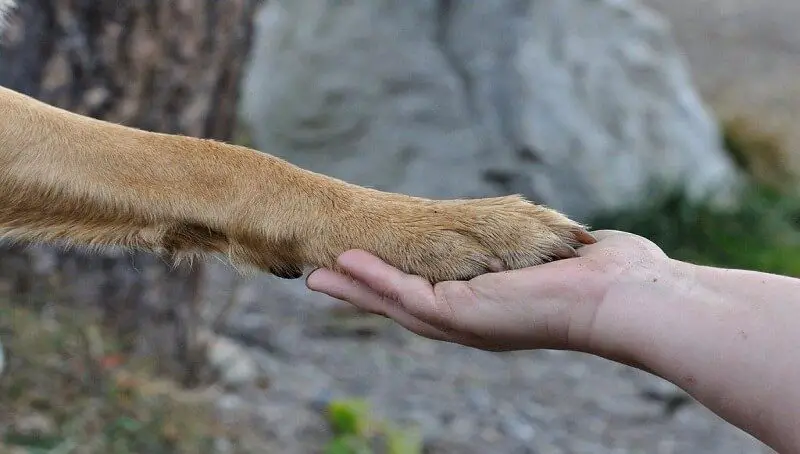If you’re a dog owner, then you surely enjoy each and every walk with it. It’s always pretty fun to see your dog discover the world and explore its surroundings while you both get exercise and fresh air.
As most animals do, dogs will also need to walk to be able to do their deeds outside, find water, but also food. This is why your pooch’s paws should always be in great shape, so they can roam freely around with, or without you.
An infected paw for your dog will mean that its walking will be impaired, mobility will be tricky and very painful and there will be some other medical conditions linked to this as well. Of course, if you love your dog, seeing it ill will be the last thing you want. You will only be able to offer it the best of care once you understand what exactly will be the cause of an infection, its symptoms, and the general required treatment. If the dog doesn’t get the necessary treatment as early as possible, this condition can quickly become more severe. So what should you know about infections at paw level in dogs?
First off let’s talk a little about the causes behind a dog paw infection
There are a few factors that might cause a paw infection and among the most common ones are:
- Parasites – Soil nematodes, mange mites, and hookworms are just some of the most common parasites to cause infections at the paw level.
- Excessive licking – Pups will resort to self-licking in an attempt to soothe irritation caused by issues like walking on sidewalk salt. Even though licking does help to some extent, doing it excessively can bring quite the opposite results. The issue might get exacerbated and lead to an infection.
- Bacteria or fungus – Some types of bacteria and fungus will cause deep paw infections which will usually be coupled with discharge and swelling.
- Allergies – According to some researchers, dogs can have allergic reactions to things like different types of foods, which can lead to a secondary infection of fungal or bacterial type.
Important symptoms of a paw infection in dogs
You might also like my articles on dog eye infections, dog dermatitis, or dog otitis.
The earlier you spot an infection, the earlier you can treat it. These are some of the symptoms you should be looking for when you believe your dog might have an infected paw:
- Discharge or pus
- Excessive paw licking
- Bruises
- Redness
- Swelling
- Ulcers
- Lesions
When is it time to be concerned and talk to a vet about a paw infection?
You shouldn’t start treatment before finding the actual cause of the infection. It is always best to talk to a vet instead of guessing the actual cause. Some infections might even require a biopsy to be taken from the area. As soon as you notice signs of a possible infection, you should take your dog to the vet, to make sure it is nothing life-threatening and to figure out the best treatment for the fastest and safest recovery.
Can a paw infection be treated at home? What are the common treatments?
 Depending on the reason behind an infection, treatments might vary considerably. Among the most common treatments for dog paw infection are:
Depending on the reason behind an infection, treatments might vary considerably. Among the most common treatments for dog paw infection are:
- Bandaging of the affected area
- Ointment when prescribed by the vet
- A warm-water soak with an antibiotic solution mixed in
- Antibiotics or antifungal medication directly
Proper treatment will usually lead to the complete healing of a paw infection in dogs.
Can I prevent a paw infection in my dog?
You’ve heard it time and time again: Prevention is better than treatment. You can do a few things to reduce the risk of developing a paw infection, even though you won’t be able to protect your dog from any unforeseen issue.
- Periodic Check-ups – You should always check the paws of your pet as regularly as possible to make sure that there is no salt or dirt inside the paw crests or between the toes. Whenever you spot an open wound, try to cover it and treat it as prescribed by your vet before it gets a chance of developing an infection.
- Trim nails – Some types of parasites and bacteria can slip under overgrown nails and develop infections. This is why it is very important to keep the nails as short as possible.
- Good hygiene – Regular baths and even wiping the paws down using wipes that are safe for pets can help get rid of any irritants.
- Booties – You can protect your dog’s paw pads by making it wear booties during the winter. This will help protect against excessive licking, salt, and other elements that might cause infections.
It can’t be fun to see your dog in pain, for whatever reason. It will happen from time to time that your dog will develop an infection at paw level. The area affected by these types of infections makes it really hard for your dog to do even the basic things, like playing and running with you or even reaching the bowl of food. To make sure you spot these issues in time, look out for symptoms like swelling, bleeding, pus, redness, weird discharge, or excessive licking.
These are the common symptoms a dog will experience when developing an infection around one of its paws. If you think your dog has an infection, regardless of the affected area, you should contact a vet as soon as possible. The reasons behind an infection are multiple, and the treatment will usually be different depending on the specific reason.




